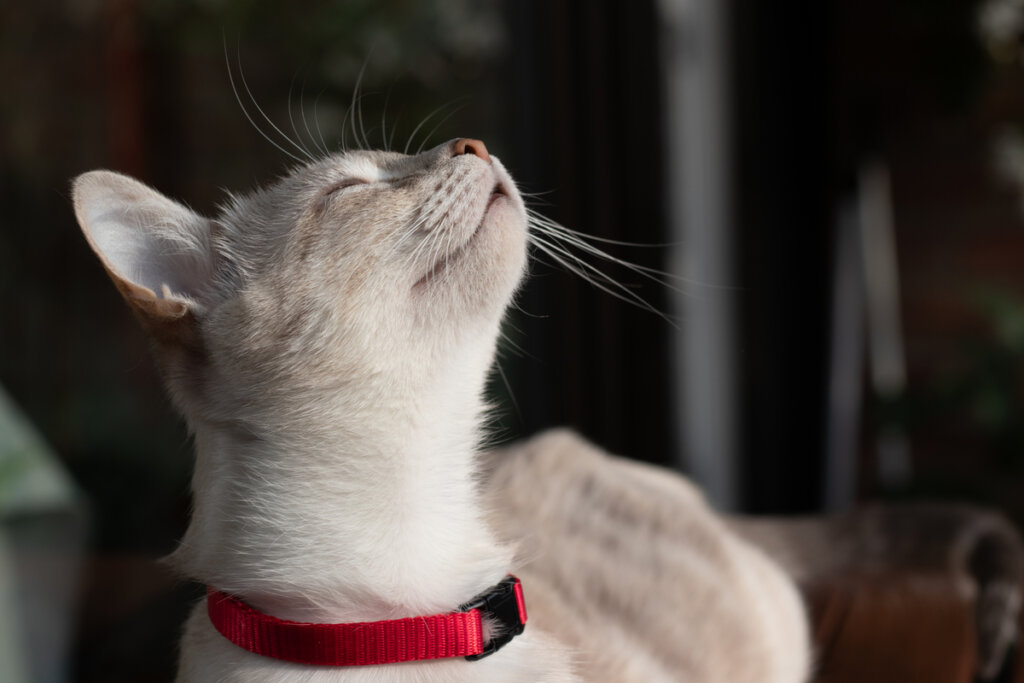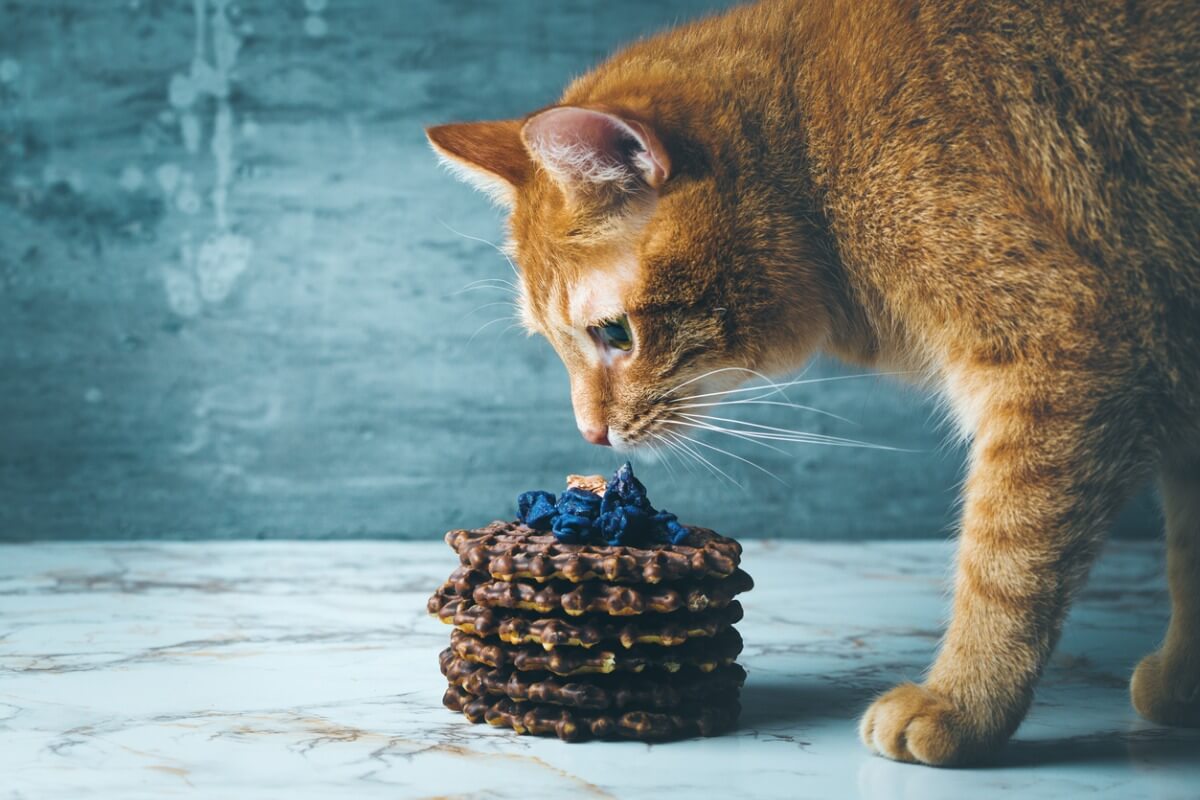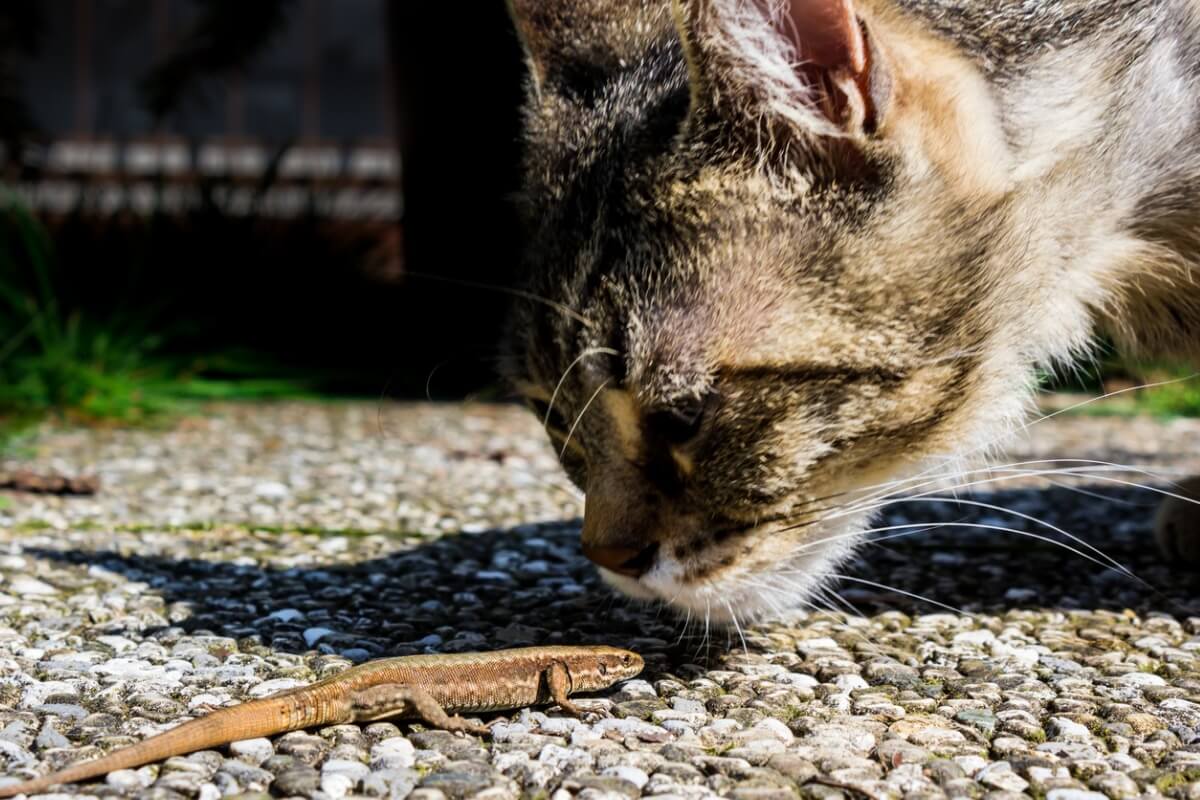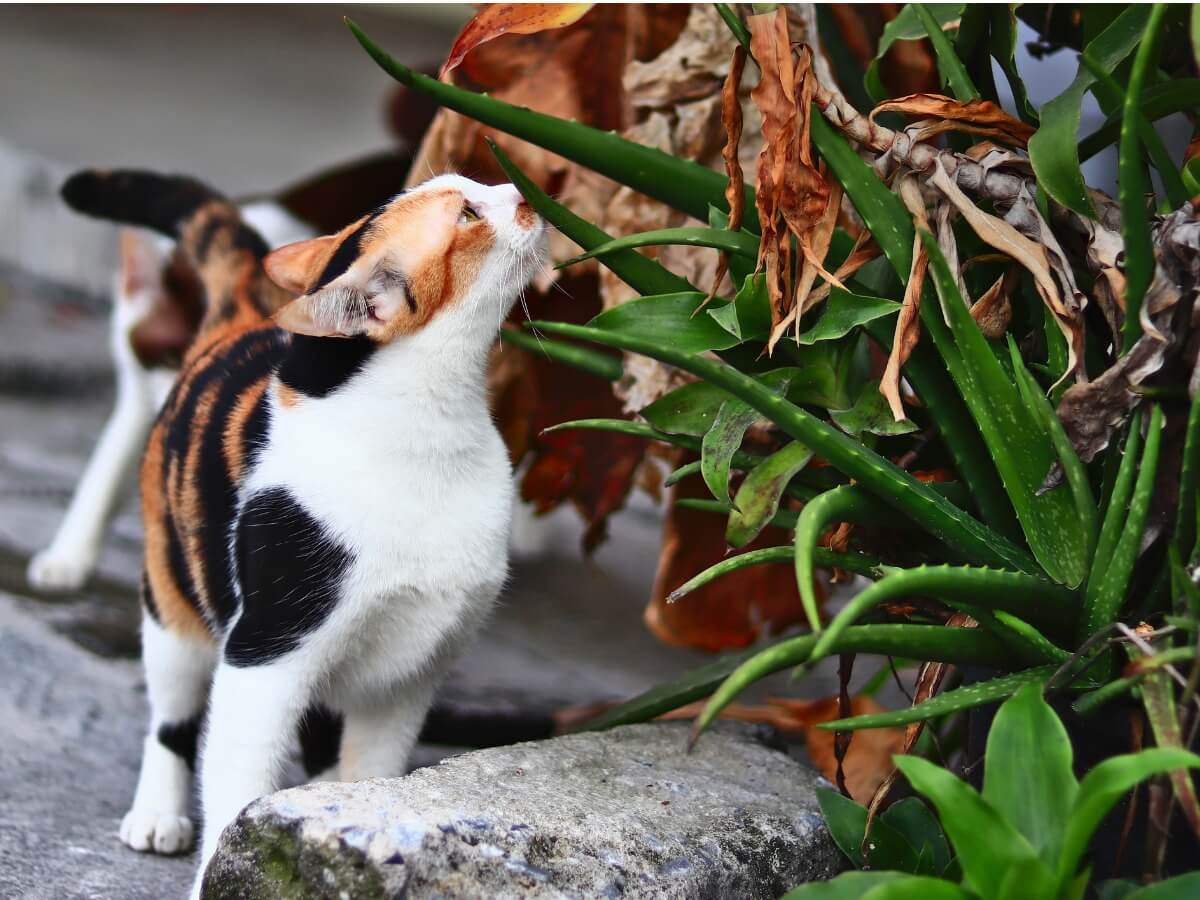Curiosities You Didn't Know About a Cat's Sense of Smell

Cats perceive information from their environment by means of different sensory signals. Because of this, a cat’s sense of smell is indispensable, as they use it in their social relationships, feeding, orientation, and upbringing. We have collected together a series of curiosities that you’re sure to enjoy reading about!

1. A cat’s sense of smell is more powerful than a human’s
A cat’s sense of smell is far more efficient than ours. This is because they have more receptors in the olfactory epithelium. They have 67 million olfactory cells in their nostrils and 19 million nerve endings related to this sense.
Because of this, a cat’s sense of smell is up to 14 times more powerful than ours. Did you realize just how good it was?
2. Cats have an accessory organ of smell
In addition to their powerful sense of smell, cats have an extra structure to perceive chemical substances. This is the vomeronasal or Jacobson’s organ, which is located in the roof of their mouths. It allows them to perceive valuable information from the environment, as they can sense not only odors, but also pheromones.
Pheromones are chemical substances that cats secrete from different parts of their body, such as the cheeks, around the mouth, at the base of the tail, the paws, and near the mammary glands. They use them to mark their territory, to feel safe, to alert, and even to reproduce. These molecules are imperceptible to humans.
The cat opens its mouth, retracts its lips, and lets its tongue hang out a little to analyze the substances with its Jacobson’s organ. They also wrinkle their muzzle. Such a position is called the Flehmen response or Flehmen reaction and is present in other animals.
3. It plays an important role in communicating and relating to their environment

Cats use all types of chemical information to communicate with each other and relate to their environment. Smells and pheromones play a crucial role in their social organization and reproduction. Cats mark their territory and preferred associates, giving a clear message to other members of their species, without needing to make physical contact with them.
When cats rub their heads or bodies on furniture, walls, or the legs of humans, they are actually marking with their pheromones. In this way, they let other cats know that they own that space or object. The same happens when they scratch specific areas of the house or garden.
4. The sense of smell is functional in newborn kittens
Newborn kittens are very fragile, helpless, and blind; their eyes are closed, so they can’t use their eyesight to develop in the world. They can’t hear either, because their ears are closed. However, they have a sense of smell that guarantees their survival, because they use it to help them find their mother’s nipple in order to feed.
Cats establish a nipple order. In this way, each kitten uses mainly one (or sometimes two) to obtain its mother’s milk. The amazing thing is that in order to discriminate their nipples they use learned olfactory signals, which apparently come from each of their kitten’s saliva.
In addition, smell influences their attachment behavior and nest directional cues. Taste and touch are also functional when kittens are born, so they complement the information they perceive with their nose.
Its thought that from the third week of life onwards vision takes on a more central role, allowing them to establish social skills.
5. Not indispensable for hunting

Although it may seem a little strange, a cat’s sense of smell is not indispensable for hunting. They seem to favor other types of signals, such as those provided by sight or hearing, because smells are more important for communication and their relationship with the environment around them.
A 2015 study found a preference for the use of their eyes, rather than their nose, in similar situations. Thus, the visual response predominated. However, individual differences in sensory behavior were evidenced in this species. Thus, more research is needed.
In summary, a cat’s sense of smell is more acute and powerful than ours, which allows them to perceive the world in a different way. Also, with the presence of Jacobson’s organ, they can perceive chemical molecules that give them valuable information about their environment and communicate with each other. These responses are astounding and show us how complex and interesting cat behavior is.
All cited sources were thoroughly reviewed by our team to ensure their quality, reliability, currency, and validity. The bibliography of this article was considered reliable and of academic or scientific accuracy.
- Arteaga, L., Bautista, A., González, D., Hudson, R. (2013) Smell, suck, survive: chemical signals
and suckling in the rabbit, cat, and dog. In: East ML, Dehnhard M (Eds). Chemical signals in vertebrates, (pp 51–59). - Mayes, E.-R. E., Wilkinson, A., Pike, T. W., & Mills, D. S. (2015). Individual differences in visual and olfactory cue preference and use by cats (Felis catus). Applied Animal Behaviour Science, 173, 52–59.
- Padodara, R., & Ninan, J. (2014). Olfactory sense in different animals. The Indian Journal of Veterinary Science, 2(1), 1-14.
- University of Edinburgh. (2019). Understand normal feline behaviours. Recuperado el 03 de diciembre de 2022, disponible en: https://www.ed.ac.uk/sites/default/files/atoms/files/2._understanding_normal_feline_behaviours_v1.2.pdf
- Willey, T. J. (1973). The ultrastructure of the cat olfactory bulb. The Journal of Comparative Neurology, 152(3), 211–232.
